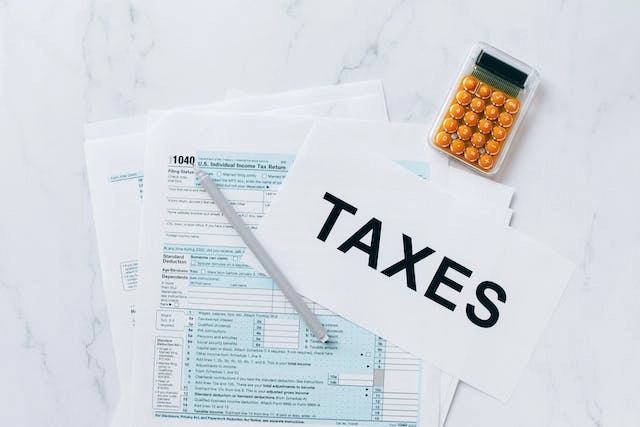Is Buy To Let Still Worth It In 2024?
The answer is more than a simple yes or no – it depends on your investment goals and objectives. With a buy-to-let, it’s important to look beyond just the tax implications.
Consider what type of investment and returns you require. Are you looking for stable passive income from rents or greater capital growth over the long term? What is your reason for investing – is it to fund retirement, help buy your own home, or build a property portfolio?
Your needs and motivations should guide your decision. While a buy-to-let can still generate reasonable profits through rental income and long-term appreciation, it requires more upfront research into house prices and ongoing effort than in the past.
The key is approaching it as a long-term investment with realistic expectations around returns. If structured appropriately to your goals, your buy-to-let can be worth it despite higher taxes and regulations.
However, before committing, a thorough cost/benefit analysis based on your specific aims is advised.
So, let’s take a deep dive to explore it further.
How Have Tax Implications Affected Buy to Let Investments?

Recently, the government has introduced several tax changes that have notably affected buy-to-let.
In 2016, they added a 3% stamp duty surcharge on purchases of additional properties like buy-to-lets. More impactful has been the reductions in mortgage interest tax relief since 2017.
Previously, landlords could deduct their mortgage interest before paying tax, providing higher-rate taxpayers with 40% relief. Now, relief is limited to 20% as a flat-rate credit. This has minimal impact on basic-rate taxpayers but significantly affects higher and top-rate landlords.
Here are the income tax rates in England, Northern Ireland & Wales:
| Tax Band | Income | Tax Rate |
| Basic Rate | £12,570 to £50,270 | 20% |
| Higher Rate | £50,271 to £150,000 | 40% |
| Additional Rate | over £150,000 | 45% |
An added complication is that landlords must now declare their total rental income, including amounts used to pay their mortgage. This can push some into a higher tax bracket, increasing their bill.
For many buy-to-let investors, especially higher-rate taxpayers with interest-only mortgages, profits have decreased substantially due to the loss of full mortgage interest relief. For example, a landlord earning £12,000 in annual rent and paying £6,000 in interest saw their tax bill rise from £2,400 to £3,600 if a higher-rate taxpayer.
While a buy-to-let can still generate reasonable returns, proper tax planning is now essential to maximise profits. So, Consulting a tax advisor can help buyers evaluate the impact of these changes on their situation.
Should You Set Up a Limited Company for Lower Taxes?
With the reductions in mortgage interest relief, some landlords consider using a limited company structure for their buy-to-let to reduce tax liabilities.
The main corporation tax rate is now 25% for profits over £250,000 (after 2023), less than the higher or additional rate income tax. So, forming a company to hold your properties could lower tax costs.
| Taxable Profits (GBP) | Tax Rate (%) |
| Up to 50,000 | 19 |
| 50,001 – 250,000 | Gradual Scale |
| Above 250,000 | 25 |
However, there are downsides to be aware of. The number of buy-to-let mortgages available to limited companies is more limited than for individuals. Arranging financing may take more work.
You’ll also need to file annual accounts and tax returns for the company, which requires using an accountant and legal advice. These ongoing compliance costs can be substantial.
A buy-to-let limited company can potentially yield some tax savings but involves more administrative burdens. It’s important to carefully evaluate whether the tax benefits for your specific situation justify the extra costs and paperwork. Consulting a tax advisor is highly recommended before establishing a company structure.
Now, Let’s look at the Pros and Cons and determine if it is still a worthwhile investment.
Is a Buy-to-let Still Worth Investing in Today’s Market?

Whether a buy-to-let still makes sense as an investment in today’s market is complex, without a definitive yes or no answer. There are several factors to weigh when considering the pros and cons:
On the positive side:
It can generate rental income, though likely lower yields than in the past. Some areas still see returns of 8%, while others are around 3%.
Opportunity for capital appreciation over time as property values rise.
Insurance is available to cover loss of rent, damages, and legal fees.
It can be part of a diversified investment portfolio.
some potential downsides include:
Higher tax liability with recent changes, reducing net profits.
Risk of periods of vacancy where no rental income is collected.
Capital is at risk if property values decline, especially with interest-only mortgages.
Ongoing costs like repairs, maintenance, and advertising for tenants.
Requires hands-on management and responsibility as a landlord.
Lower liquidity than other investments like stocks.
Determining if a buy-to-let investment is a good fit depends significantly on your financial situation and investment objectives.
There are arguments on both sides. For investors taking a long-term perspective and entering the market with realistic expectations around returns and responsibilities, buy-to-let can still play a role in an investment portfolio.
However, conducting thorough due diligence is essential, and consulting a financial advisor is highly recommended before using retirement savings. By weighing all the variables based on your circumstances, you can better evaluate if buy-to-let aligns with your goals.
How to Get Started With Buy-to-let?
For those new to buy-to-let mortgage, here are some key steps to begin your journey as a landlord:
Succeeding with pirchasing a buy-to-let requires upfront planning and ongoing hands-on involvement.
But by following these key steps and working with financial and legal professionals, you can effectively start building your portfolio as a landlord. Be sure to conduct thorough research and budget realistically before purchasing.
Role of a Property Management Company
Buy-to-let investing does demand a proactive commitment from the landlord. Time and effort is required from the initial property purchase through ongoing management.
Extensive research is needed to select an ideal investment property for rental income and appreciation. Once purchased, landlords must furnish and improve the home as needed to attract quality tenants. Many investors hire a property management company to handle advertising, tenant screening, maintenance issues and more.
Benefits of using a letting agent to manage your property:
Employing a letting agent to handle management can be advantageous for buy-to-let investors, especially given expanding regulations. Agents ensure compliance with essential legal requirements like Energy Performance Certificates, electrical safety checks, and annual gas certifications.
Keeping up with the intricate web of changing rules would be a complex, time-consuming burden for DIY landlords. Experienced agents stay current on regulations so you avoid issues.
Their expertise also provides peace of mind that your property and tenants are being managed safely and legally. Rather than getting bogged down in day-to-day responsibilities, you can focus on high-level investment decisions while the agent handles advertising, tenant screening, maintenance coordination and more.
For many buy-to-let investors, the fees for professional property management are money well spent to reduce workload and liability while optimising returns.
Alternatives to a Buy-to-let Investment

Several options provide exposure without direct property ownership for investors interested in real estate but wary of buy-to-let’s hands-on requirements.
01 Real estate investment funds
These allow pooling capital to invest in commercial properties managed professionally. Returns historically average 10% but require locking money up for years. More liquid than direct ownership.
02 Bonds
Relatively stable, lower-risk income investments issued by governments and companies. Bonds pay set interest rates over defined periods from 1 to 10+ years. Corporate bonds often yield around 5%.
03 Peer-to-peer lending
You lend money directly to individuals and businesses via online platforms. Cutting out middlemen provides higher returns than savings/bonds but with more risk. Not protected like bank deposits.
04 Stocks
Shares in public companies are volatile but historically return 8-10% long-term. Quicker access to money than property. Best suited to patient investors with longer time horizons.
Each alternative has pros and cons to weigh based on your specific risk appetite, return requirements, and liquidity needs.
Though not without challenges, buy-to-let properties remain viable, especially for hands-on investors taking a long-term perspective. However, assessing these other paths can provide diversity and reduce real estate exposure.
Final Words: is Buy-to-let Right for You?
Deciding if a buy-to-let is a good personal investment ultimately requires looking holistically at your financial situation and goals. Consider factors like:
While a buy-to-let investment has its challenges today, it can still prove profitable for the right investor. Conduct thorough due diligence on locations, financing options, and regulations before purchasing. Seek guidance from financial and tax advisors to decide if buy-to-let aligns with your broader investment strategy and objectives.






